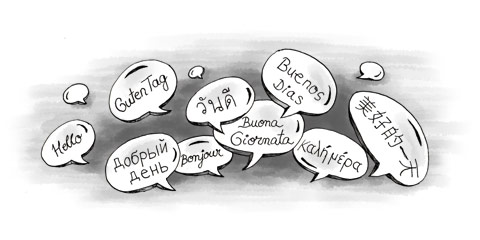Today the Hungarian State is more than 1,000 years old and a lot of things have changed since the first coronation but the oldest traditions and the unique language are still the same.
The Hungarian language
The Hungarians call their language “magyar” and its grammar and vocabulary are completely different to the Indo-European languages which surround Hungary. The language is not related to any other Central European language but belongs to the Finno-Ugric language phylum, which includes Finnish and Estonian. Its closest relatives are Khanty and Mans, languages which are spoken by a few thousand people only.
The language (for the most part) stems from Asia, more specifically, the Uralic region. Since the Hungarians have lived in the Carpathian Basin for more than 1,000 years, their vocabulary also carries influences of various Slavonic languages. And due to the Austro-Hungarian Monarchy, the language is also influenced by German.
The grammar is seemingly complex, yet there is no gender, a feature that most English speakers grapple with when learning other European languages. Hungarian is an agglutinative language, meaning that it relies heavily on suffixes and prefixes. Word order is extremely flexible, quite often changing word order has no effect on the sentence or just puts slightly more emphasis on one part or the other. Pronoun subjects are generally absorbed into the verb (when they occur explicitly it is generally to give special emphasis to the subject: te vagy az utolsó ("you are the last one").
Hungarian does use the Roman alphabet however, and after learning a few simple rules one can easily read Hungarian. Pronunciation is less difficult, especially compared to other neighbouring languages like Czech or Russian. In addition to the standard letters of the Latin alphabet, Hungarian uses several additional letters. These include letters with acute accents (á,é,í,ó,ú) which represent long vowels, with umlauts ( ö and ü) and their long counterparts ő and ű.
Geographical and ethnic distribution
Hungary has almost 11 million inhabitants, 92 percent of which speak Hungarian as a native language. Approximately 4 million Hungarian speakers live in the neighbouring countries as minorities, in the areas that were once part of the Kingdom of Hungary before World War I. About 1,4 million of them live in Romania, but Hungarian minorities can also be found in Slovakia, Serbia, Ukraine, Croatia, Austria and Slovenia. Larger groups of Hungarian speakers can also be found in Israel and the USA.
Dialects
There are several dialects spoken in Hungary (they are differentiated ethnologically), although they do not differ from each other as much as for example German dialects.: Alföld, West Danube, Danube-Tisza, King's Pass Hungarian, Northeast Hungarian, Northwest Hungarian, Székely and West Hungarian. These dialects are mutually intelligible but the most peculiar of them all is the Hungarian Csángó dialect. It preserved a dialect that resembles medieval Hungarian because the Csángó minority group has been isolated from other Hungarians.
Minority languages
About 5 percent of Hungary’s population speaks Romany (the language of the Romanies) as a native language. 0.4 percent speaks Croatian.
Learning the language
It is not easy to master the Hungarian language as a foreigner. The grammar is difficult and different from other European languages – which is also the reason why this language has always been of great interest to linguists. But if you like the sound of this language it is worth a try to learn it.

